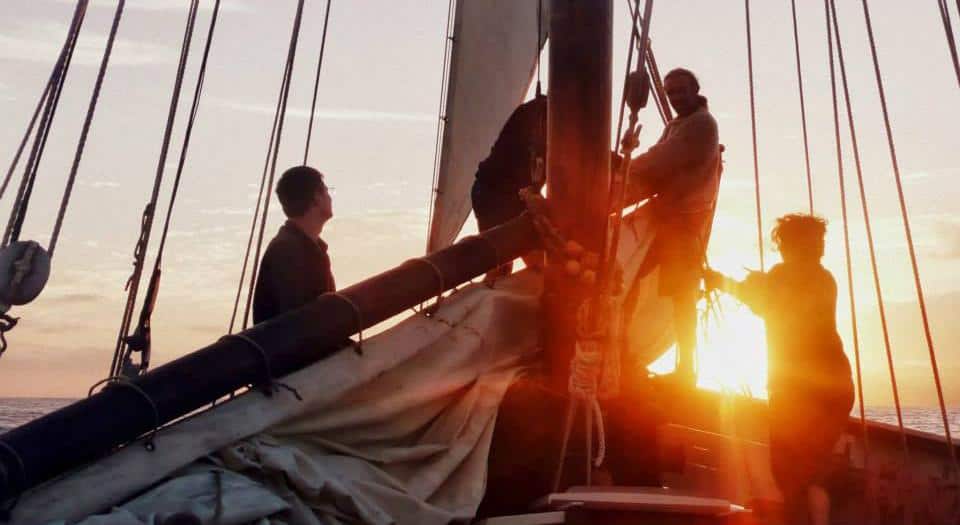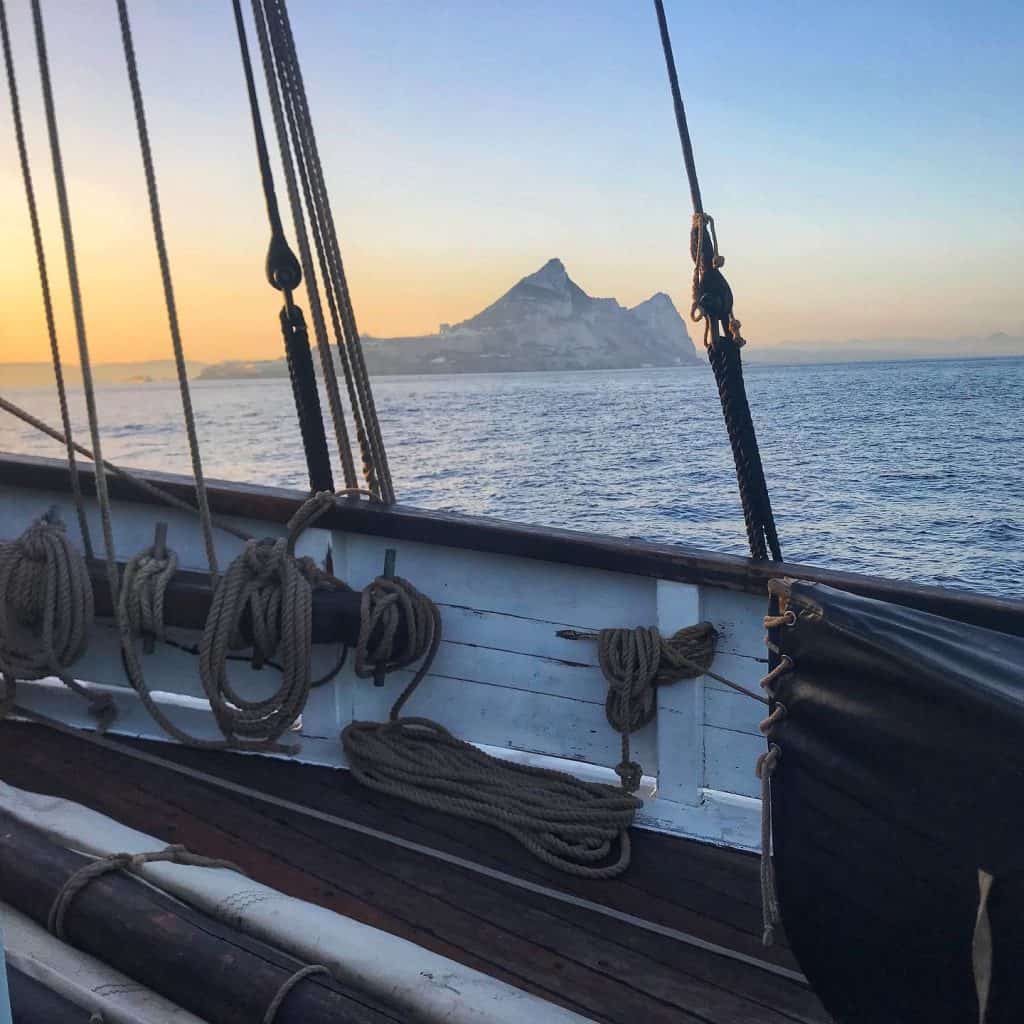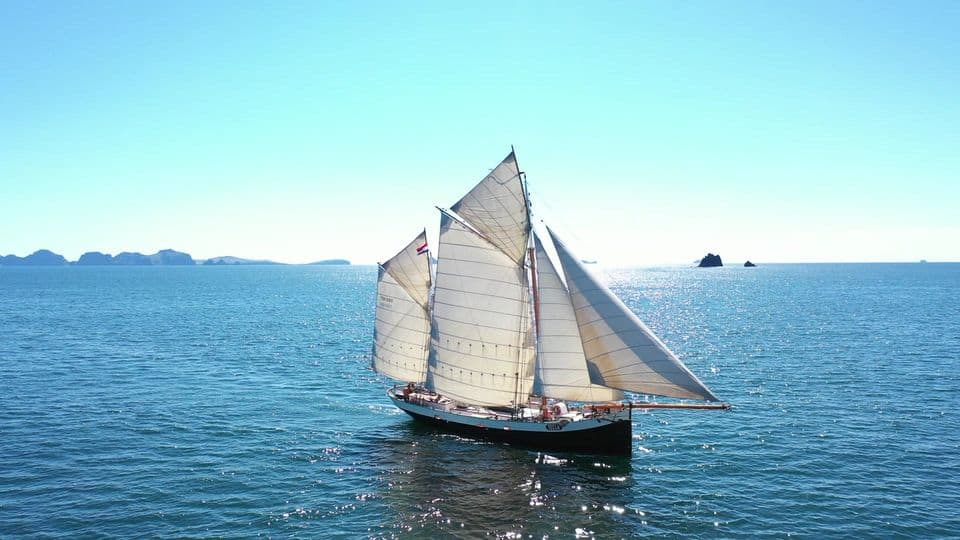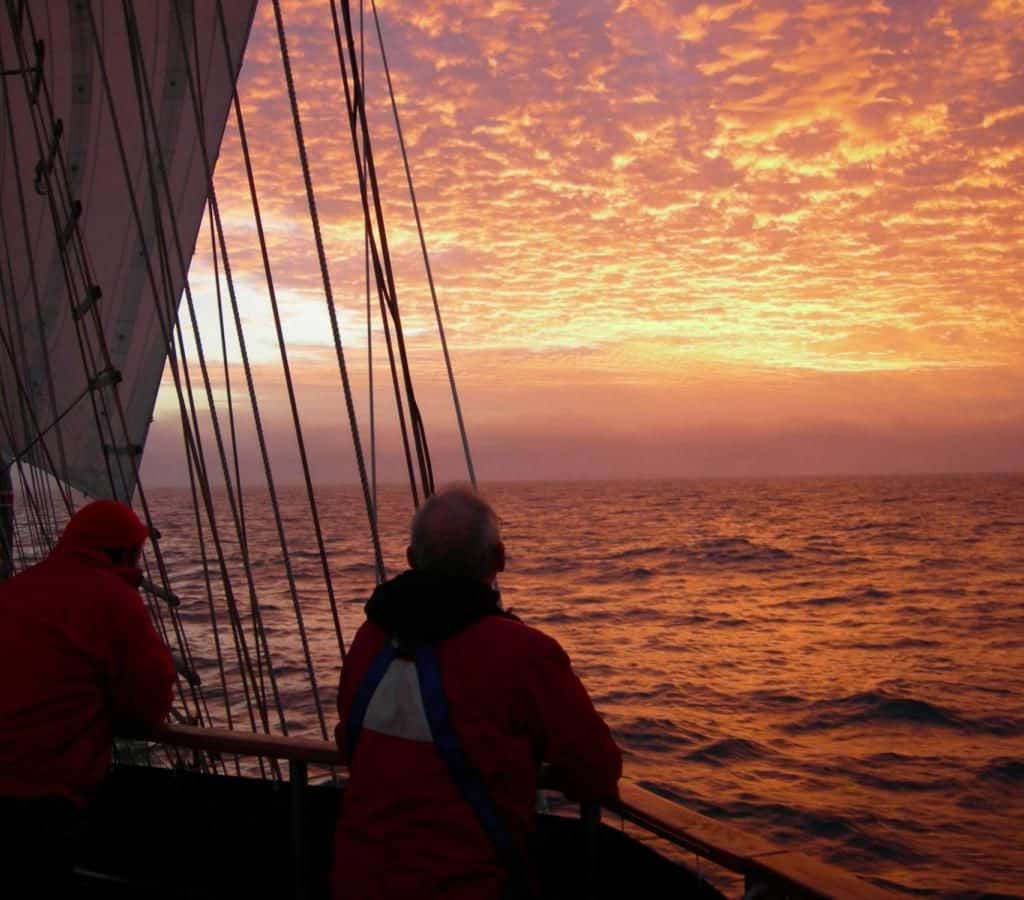Life at sea has different rhythms to the land. There are more changes than you might think and they all add to a unique experience you can’t get any other way.
The rhythm in your feet.
Once the ship has left port the sea will begin to move you.
Your sense of balance will be highlighted. As you walk across the deck you will be constantly adjusting to however small the movements are. Gradually as you get used to the rhythm your gait will change. You might not walk bowlegged with a wobble like sailors of old but you will understand how they got that rhythmic walk.
Rhythm of the Ship
The ship’s rhythm is steady but not quite constant, it is as if the ship is a live animal, responding to the gusts and lulls in the wind, the short waves of the current wind and the swell of a regular wind. Perhaps the tides or the sea being shallower have made the sea more choppy. It will keep you on your toes! I wonder where that expression came from?
The Rhythm of the Watches
The rhythm of watch keeping is set in a variety of different ways. It could be four hours on and eight off, six hours on and six off, and other permutations. It all depends on which system the captain thinks is best for the ship and crew. I can tell you that just as you get settled into your watch periods someone will change it. Changes may be made to make the distribution of night watches fair for everyone. That way you will get the full experience – see Dawn at Sea




The Rhythm of the Day.
Apart from the watch rhythm there are set times for meals where half the ship eats in two sittings, that way there is always crew on watch. Your stomach gets used to the meal rhythm! (Oh and smoko, this is the term used on some ships for a morning or afternoon coffee break, you can guess the origin.)
The Rhythm of the Weather.
On a longer voyage the rhythm of the weather patterns can be followed and change as you move gradually from one climate to another. Sailing along east or west you may find a regular pattern of low weather systems or a constant trade wind pushing you along.
I can recall sailing from South America and when we got beyond beyond Tristan da Cunah heading towards Cape Town we had for about five days we had a low pressure system to the north of us and a high pressure system to the south of us and a constant strong westerly wind pushing us a long at about ten knots. Fantastic Sailing!
Tecla Cape Horn to Cape of Good Hope via Antarctica and South Georgia – February 2024
Tecla Cape to Cape 2024.
Lost Rhythms.
At the start of the voyage your head will be full of the rhythms of your days ashore.
When you were ashore and awake you were constantly making decisions, answering questions and going about your daily routine. Commuting and computing, emailing and texting, meetings and nights out, what’s on the telly, what’s the latest news? Say goodbye to all that. It takes me about four or five days to get rid of the urge to keep up. At sea your life is pretty much set for you, very few personal decisions are required, what to wear and how much to eat are about it.
As your land rhythms disappear your brain clears, the fog of landlife is left behind you over the horizon. A sailor looks to tomorrow and likes to keep the ship well maintained and in good shape, prepared for whatever the sea and wind can give it, but the future, no, that’s not important, it’s the voyage and nothing else.
Getting into the rhythm
To really get into the rhythm of the sea you need as long a voyage as you can possibly make.
Rhythm of the Sea Voyages.








